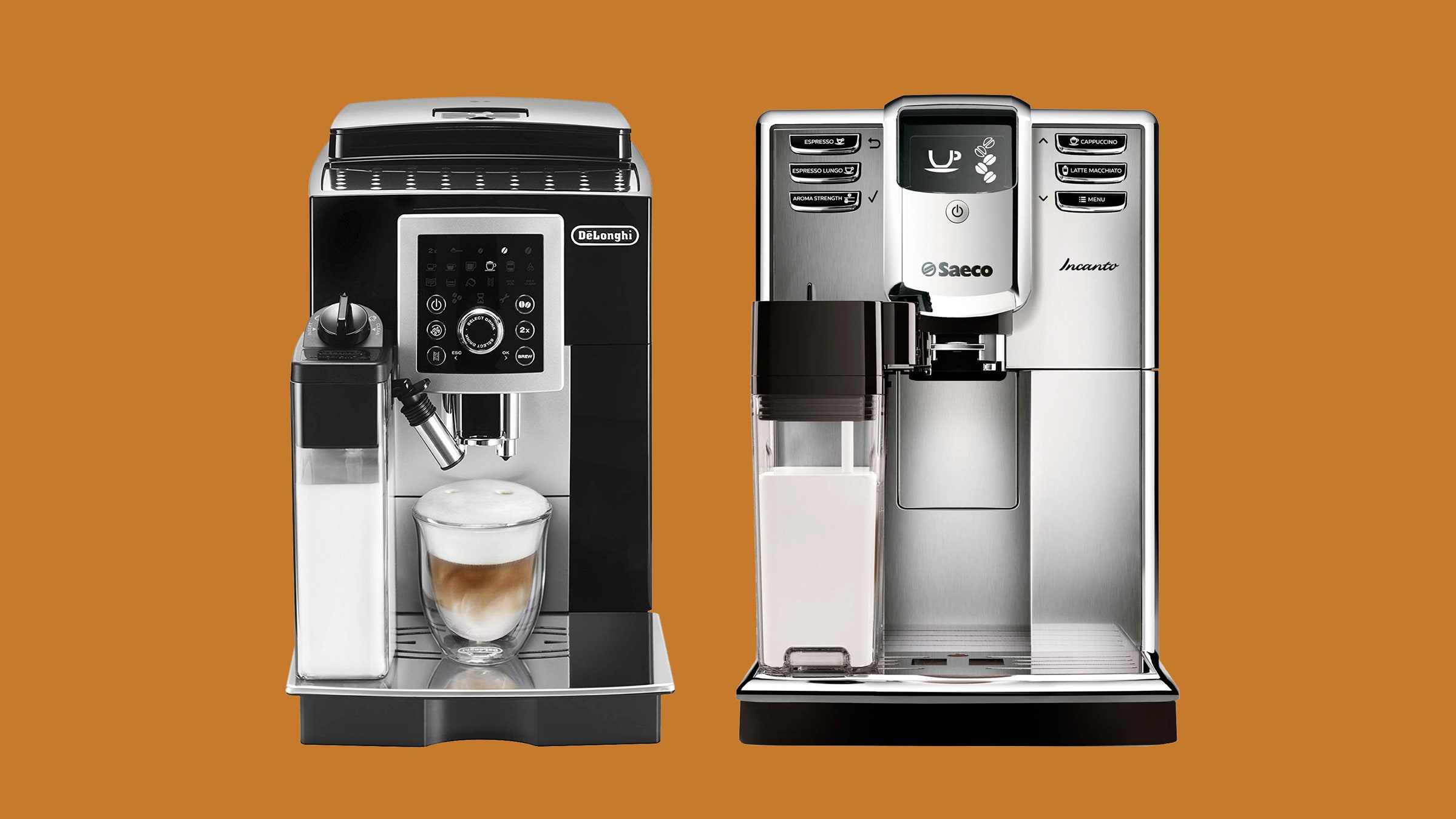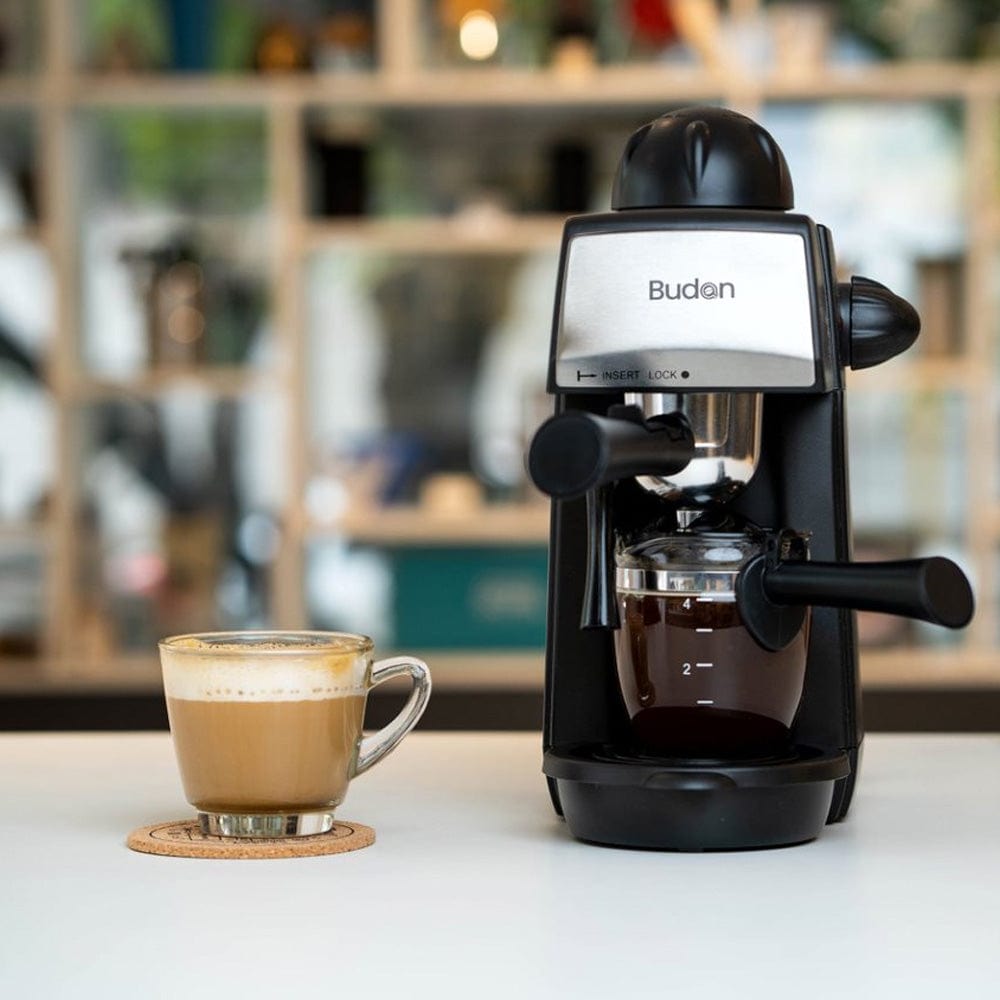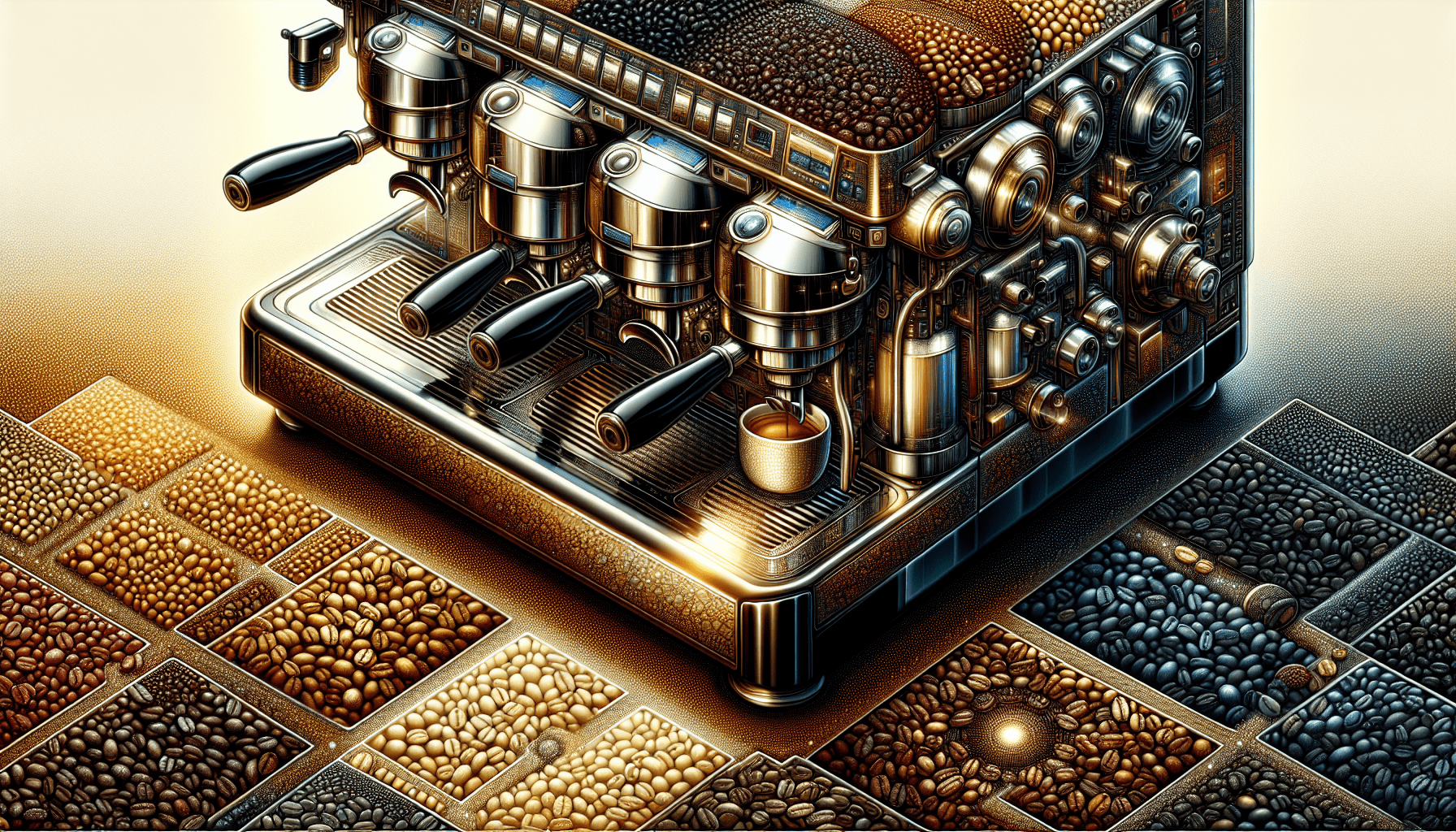Imagine waking up to the rich aroma of freshly brewed coffee, wafting through your home. You stumble into the kitchen, still groggy from sleep, and find yourself face-to-face with a futuristic wonder: a super-automatic espresso machine. But how does this magical contraption transform coffee beans into a steaming cup of perfection? Let’s take a closer look at the mesmerizing bean-to-cup process in a super-automatic espresso machine and uncover the secrets behind your morning pick-me-up.
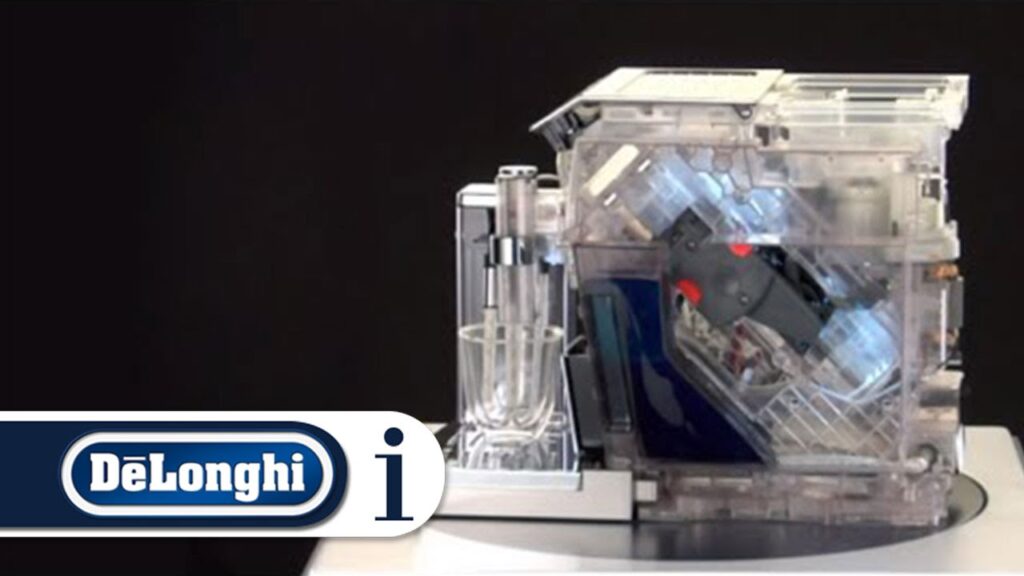
Overview of the Bean-to-cup Process
Definition of the Bean-to-cup Process
The bean-to-cup process refers to the entire journey that coffee takes, from being whole coffee beans to a freshly brewed cup of espresso. In the case of super-automatic espresso machines, this process is made incredibly convenient and efficient due to the machine’s ability to perform all the necessary steps automatically.
Importance of Bean-to-cup Machines
Bean-to-cup machines eliminate the need for multiple coffee-making appliances and simplify the entire coffee brewing process. With these machines, you can enjoy a freshly ground and brewed cup of coffee with just a few simple steps. The importance of bean-to-cup machines lies in their ability to consistently produce high-quality coffee with minimal effort, making them an excellent choice for coffee enthusiasts and busy individuals alike.
Advantages of Super-automatic Espresso Machines
Super-automatic espresso machines offer several advantages in the bean-to-cup process. Firstly, these machines are incredibly convenient as they automate almost all the steps involved in making a cup of coffee, from grinding the beans to frothing the milk. Additionally, super-automatic machines provide consistent results, ensuring that each cup of coffee is of the same high quality. Furthermore, these machines often come with customizable settings, allowing you to personalize your coffee experience according to your preferences.
Grinding and Tamping
Grinding the Coffee Beans
The first step in the bean-to-cup process is grinding the coffee beans. Super-automatic espresso machines have built-in grinders that allow you to grind your coffee beans right before brewing, ensuring maximum freshness. These machines usually offer adjustable grind settings, allowing you to choose the desired coarseness or fineness of the coffee grounds.
Adjusting the Grind Size
The grind size plays a crucial role in the extraction process, as it determines the rate at which the coffee flavor is extracted. Coarser grounds result in a slower extraction, while finer grounds extract flavors more quickly. Super-automatic espresso machines often feature adjustable grind size settings, allowing you to customize the extraction process based on your preferences.
Tamping and Distributing the Ground Coffee
Once the coffee beans are ground, the next step is tamping and distributing the ground coffee evenly within the portafilter. Tamping is the process of applying pressure to the coffee grounds, ensuring a uniform surface for optimal water flow during brewing. Super-automatic machines handle tamping automatically, taking the guesswork out of achieving the perfect tamp. This eliminates the need for manual tamping and ensures consistent extraction with every cup of coffee.
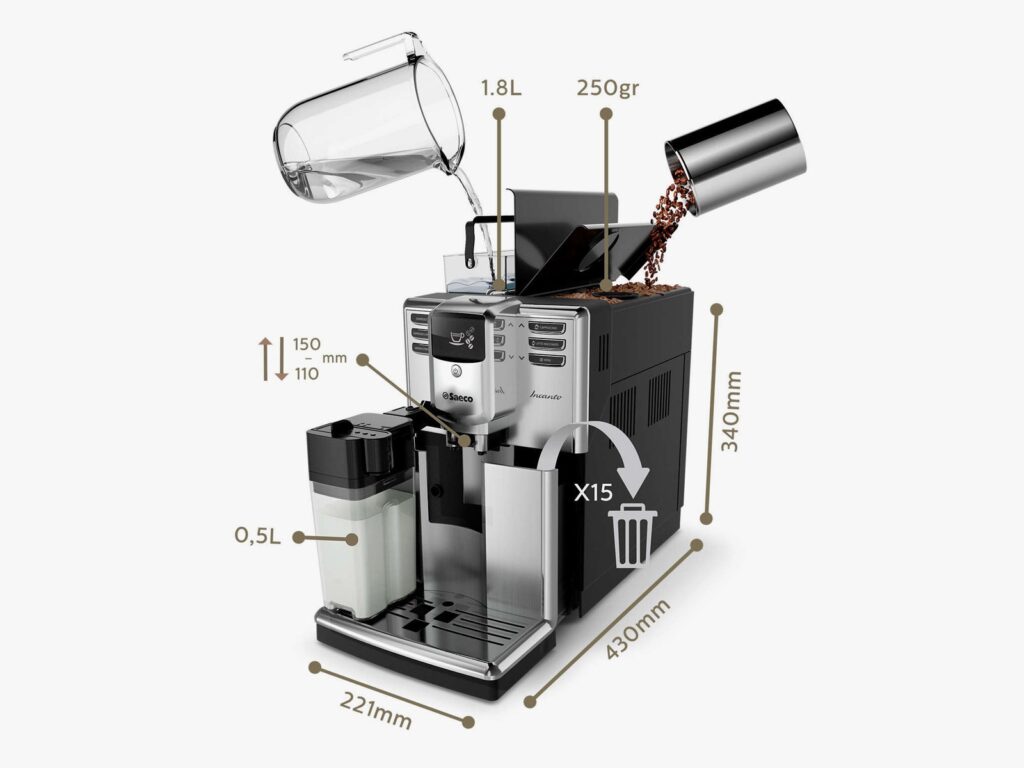
Brewing
The Extraction Process
The extraction process is the heart of the brewing process and involves forcing hot water through the coffee grounds to extract the flavors and aromas. Super-automatic espresso machines control this process by regulating the water temperature, pressure, and brewing time to achieve the desired extraction. This ensures that each cup of coffee is brewed to perfection, with the flavors and characteristics of the beans fully extracted.
Water Temperature and Pressure
The water temperature and pressure are critical factors in achieving an ideal extraction. Super-automatic espresso machines maintain a consistent water temperature and provide sufficient pressure to ensure a balanced extraction. The optimal water temperature for brewing coffee is typically between 195°F and 205°F (90°C and 96°C) to extract the desired flavors without burning the coffee.
Controlled Brewing Time
The brewing time is another crucial factor in the extraction process. Super-automatic espresso machines allow you to control the brewing time, ensuring that the water interacts with the coffee grounds for the optimum duration. This control ensures that the flavors are extracted fully without over or under-extraction, resulting in a well-balanced and flavorful cup of coffee.
Milk Frothing and Steaming
Milk Frothing Techniques
Super-automatic espresso machines often come equipped with automatic milk frothers that produce rich and creamy milk foam. These frothers use a combination of steam and air to create perfectly textured milk for cappuccinos, lattes, and other milk-based coffee beverages. The frothing technique can be adjusted to achieve different foam densities and consistencies, allowing you to customize your milk-based drinks according to your preferences.
Steaming Temperature and Pressure
Achieving the perfect milk texture requires careful control of the steaming temperature and pressure. Super-automatic espresso machines provide precise control over these variables, ensuring that the milk is heated to the ideal temperature and steamed to the desired consistency. The ability to adjust these parameters allows you to create a range of milk textures, from silky smooth to thick and velvety.
Creating Different Milk Textures
Whether you prefer microfoam for latte art or a creamy froth for cappuccinos, super-automatic espresso machines give you the flexibility to create various milk textures. By adjusting the steam pressure and the frothing technique, you can achieve different results with just a touch of a button. This versatility allows you to experiment and create coffee beverages with a personalized touch.
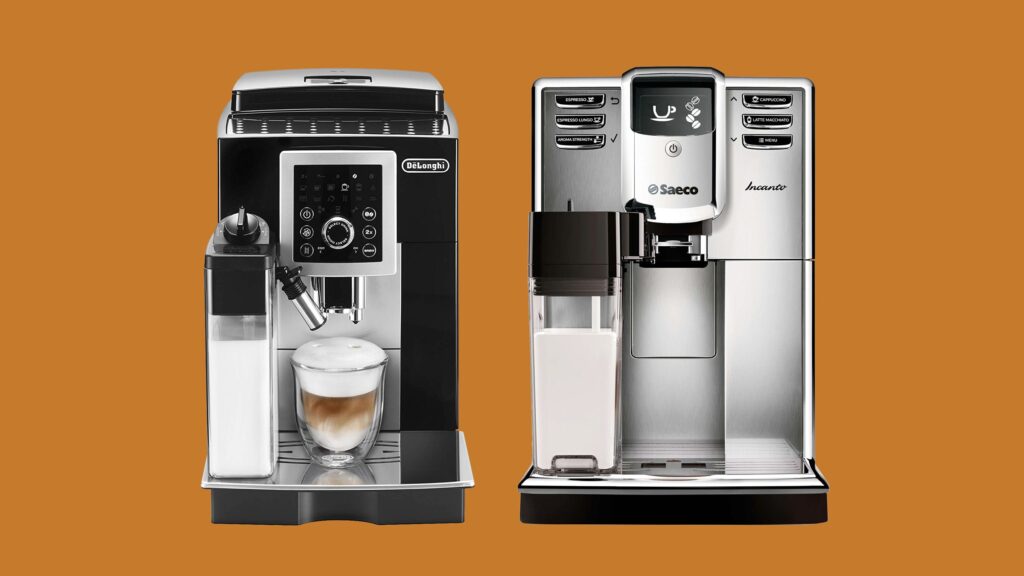
Temperature Control
Importance of Temperature Control
Temperature control is crucial in coffee brewing, as it affects the extraction process and the overall taste of the coffee. Super-automatic espresso machines prioritize temperature control to ensure that the brewing water remains within the optimal range for extracting flavors. Consistent temperature control guarantees that each cup of coffee is brewed at the right temperature, resulting in a rich and flavorful brew.
Maintaining Optimal Brew Temperature
Super-automatic espresso machines use advanced heating systems that maintain a constant brew temperature throughout the brewing process. This ensures that the water remains at the ideal temperature from the moment it touches the coffee grounds until the final drop is brewed. By keeping the temperature consistent, these machines eliminate any fluctuations that may negatively impact the flavor profile of the coffee.
Adjusting Milk Steaming Temperature
In addition to brew temperature control, super-automatic espresso machines also offer the ability to adjust the steaming temperature for milk. This feature is especially useful when preparing different types of milk-based beverages that require specific temperatures. Being able to control the milk steaming temperature allows you to achieve the perfect balance between heat and flavor, ensuring a delicious and satisfying drink.
Automated Cleaning and Maintenance
Automatic Milk Frother Cleaning
Maintaining a clean and hygienic milk frother is essential for the quality and taste of your coffee beverages. Super-automatic espresso machines take care of this by offering automatic milk frother cleaning cycles. These cycles purge any remaining milk residue and steam, ensuring that the frother is clean and ready for the next use. This automatic cleaning feature saves you time and effort, making it a convenient option for daily maintenance.
Self-cleaning Brewing System
Super-automatic espresso machines often come equipped with self-cleaning brewing systems. These systems automatically clean the internal components of the machine, including the brewing unit and the coffee spouts. Regular self-cleaning cycles help remove any coffee residue and oils that can accumulate over time, ensuring that your machine remains in optimal condition and consistently produces high-quality coffee.
Maintenance and Descaling
Like any other coffee machine, super-automatic espresso machines require regular maintenance to ensure their longevity and performance. This includes descaling the machine to remove mineral deposits that can affect the taste of your coffee. Super-automatic machines often have built-in descaling programs that guide you through the process, making it simple and hassle-free. Following the manufacturer’s recommended maintenance schedule will help keep your machine running smoothly and prolong its lifespan.
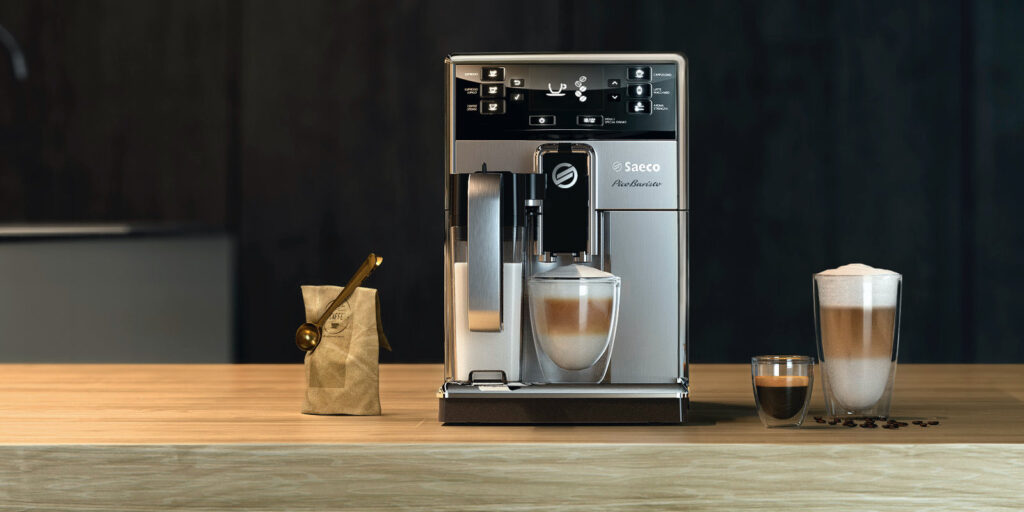
Customization and Programming
Adjusting Coffee Strength and Volume
Super-automatic espresso machines offer the flexibility to adjust the strength and volume of your coffee according to your personal preferences. By using the machine’s control panel or touchscreen display, you can easily customize your coffee by selecting the desired strength and volume options. This customization feature allows you to craft your perfect cup of coffee, tailored exactly to your taste.
Programmable Drink Options
Many super-automatic espresso machines come with pre-programmed drink options, offering a wide variety of coffee beverages at the touch of a button. From espresso shots to macchiatos, lattes, and more, these machines provide a convenient way to enjoy your favorite coffee drinks without the need for manual preparation. The programmable drink options save you time and effort, making it easier than ever to indulge in your coffee cravings.
Personalized Settings and Profiles
For households with multiple coffee enthusiasts, super-automatic espresso machines often offer personalized settings and profiles. These machines allow each user to create and save their preferred coffee preferences, including strength, volume, and even milk frothing settings. With personalized profiles, everyone in the household can enjoy their coffee just the way they like it, without having to adjust the settings each time.
Bean Hopper and Water Tank
Bean Storage and Grinding Capacity
Super-automatic espresso machines typically have large bean hoppers that can hold a substantial amount of coffee beans. This eliminates the need to constantly refill the hopper, allowing you to enjoy multiple cups of coffee without interruption. Additionally, these machines often have adjustable grinding capacities, which means you can control the amount of coffee that is ground for each brewing cycle, ensuring that you have the perfect amount for your desired cup size.
Refilling Water Tank
The water tank in super-automatic espresso machines is designed to hold a sufficient amount of water for multiple brewing cycles. However, depending on your coffee consumption, you may need to refill the water tank periodically. Most machines have easily accessible water tanks that can be refilled without any hassle. Additionally, some super-automatic machines come with automatic water level sensors that alert you when the water level is low, ensuring that you never run out of water during brewing.
Automatic Alert Systems
To further enhance user convenience, super-automatic espresso machines often feature automatic alert systems. These systems notify you when certain actions are required, such as refilling the water tank, emptying the coffee grounds bin, or cleaning the machine. These alerts ensure that you stay on top of essential maintenance tasks and allow you to enjoy your coffee without any interruptions.

User Interface and Display
Control Panel and Buttons
Super-automatic espresso machines feature user-friendly control panels with buttons that allow you to navigate through various settings and functions. The control panels are intuitively designed, making it easy for users to interact with the machine and access the desired features. With the press of a button, you can adjust coffee strength, select drink options, and even initiate the cleaning or descaling processes.
Touchscreen Displays
Modern super-automatic espresso machines often come equipped with touchscreen displays, elevating the user experience to a new level of convenience. These displays provide a visually appealing and interactive interface, allowing you to navigate through different settings, menus, and drink options with ease. Touchscreen displays offer a more user-friendly approach to programming and customization, making it seamless to tailor your coffee experience.
Menu Navigation and Settings
The user interface of super-automatic espresso machines includes menu navigation options that enable you to access a range of settings and functions. The menus are designed to be straightforward, allowing you to find and adjust various parameters easily. From coffee strength to drink temperature, milk frothing settings, and more, the menu navigation system ensures that you have full control over your coffee brewing process.
Maintenance and Troubleshooting
Regular Cleaning and Maintenance
To keep your super-automatic espresso machine in top shape, regular cleaning and maintenance are necessary. This includes cleaning the brewing unit, coffee spouts, milk frother, and other removable parts. Additionally, wiping down the exterior of the machine and removing any coffee residue or spills is important. Following the manufacturer’s recommended cleaning instructions and schedule will help extend the lifespan of your machine and ensure that your coffee always tastes its best.
Identifying and Fixing Common Issues
Despite their advanced features, super-automatic espresso machines may encounter minor issues from time to time. These can range from simple troubleshooting tasks such as unclogging the coffee spouts or recalibrating the grind settings to more complex issues like addressing machine errors or malfunctioning components. Most super-automatic machines come with detailed user manuals that provide guidance on identifying and fixing common issues. Following the troubleshooting steps outlined in the manual can help resolve many problems and ensure that your machine operates smoothly.
Professional Servicing and Support
In some cases, troubleshooting may not solve the problem, or you may prefer professional assistance for maintenance and repairs. Super-automatic espresso machines are typically backed by manufacturers or authorized service centers that offer servicing and support. If you encounter any major issues or require in-depth repairs, contacting the manufacturer or an authorized technician is recommended. They have the expertise and resources to diagnose and fix complex issues, ensuring that your machine is restored to optimal working condition.

